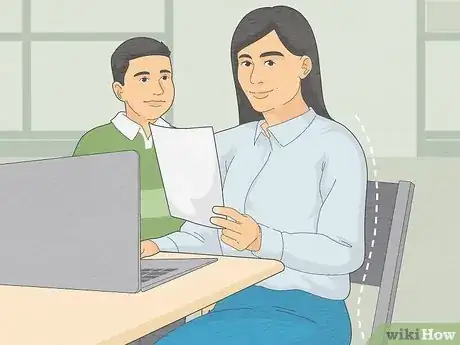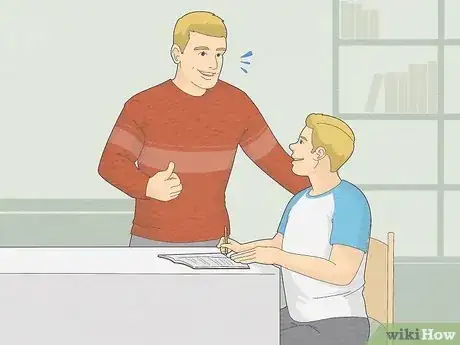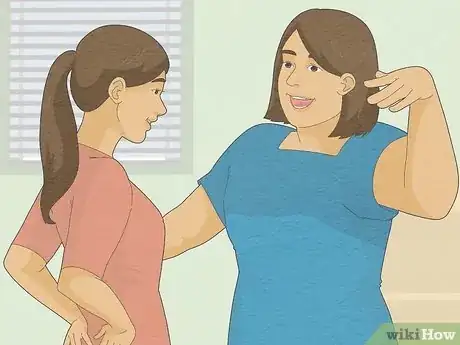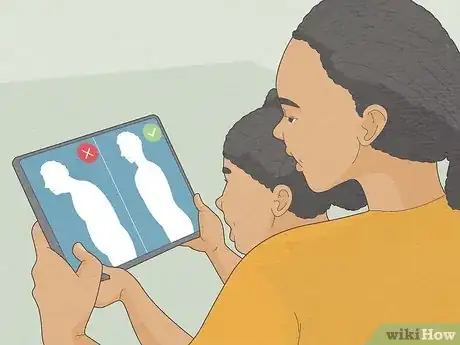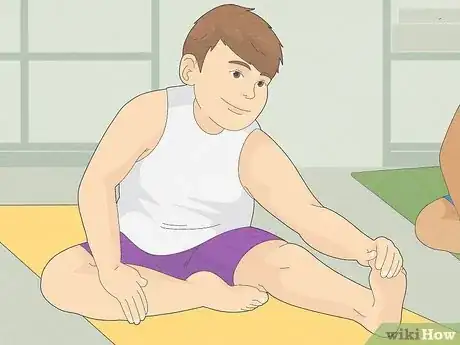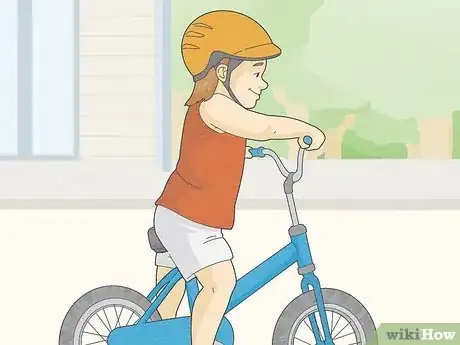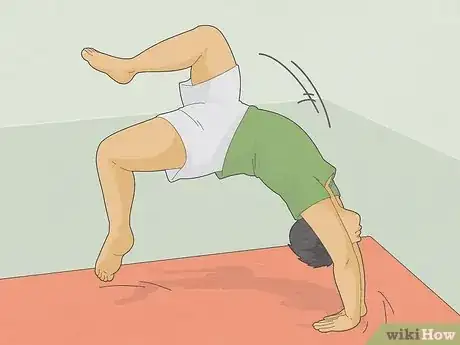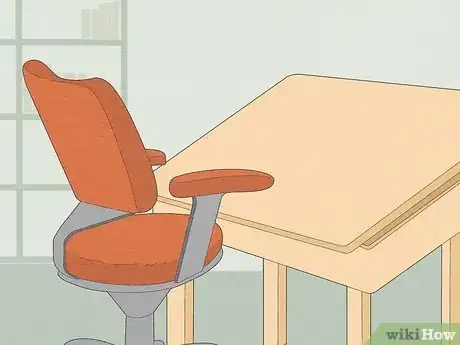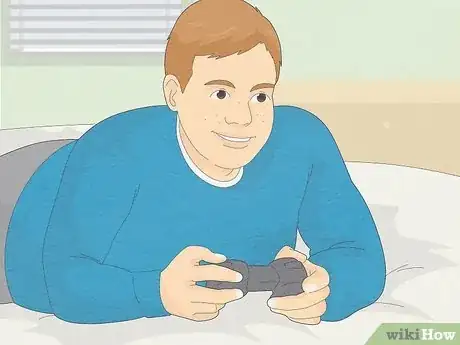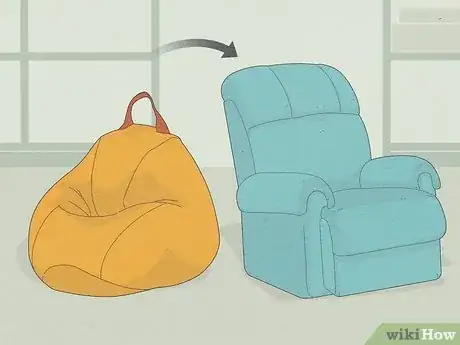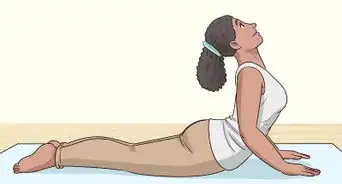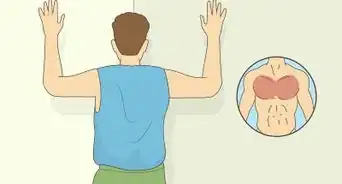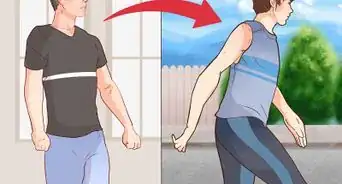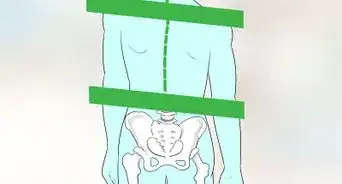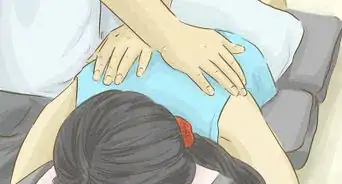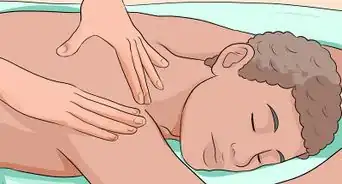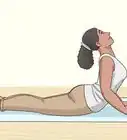This article was co-authored by Jason Myerson, DPT, DMT, OCS, FAAOMPT. Jason Myerson is a Physical Therapist and a Certified Orthopedic Specialist. He is affiliated with Performance Physical Therapy & Wellness with clinics located in Connecticut. He serves as adjunct faculty in the Physical Therapy Department at Quinnipiac University. Jason specializes in helping active people get back to hobbies, activities, and sports they love while utilizing an integrated approach to wellness. He holds an MA in Physical Therapy from Quinnipiac University and a Doctorate in Physical Therapy (DPT) from Arcadia University. He is Residency and Fellowship trained in Orthopedic Manual Therapy, achieved a Doctorate in Manual Therapy (DMT) and became a Fellow of the American Academy of Orthopedic Manual Physical Therapists (FAAOMPT).
This article has been viewed 53,759 times.
Good posture is important. Not only can it prevent muscle soreness and disorders like carpal tunnel syndrome, good posture can increase overall confidence. There are many ways you can teach your children good posture. Try teaching your kids the benefits of posture, encouraging activities that promote good posture, and altering your home to make sure furniture helps kids sit up straight.
Steps
Teaching Good Posture
-
1Teach by example. The best way to show children how to have good posture is to demonstrate as much yourself. Children, especially very young children, tend to learn best by observation. If you've worked a desk job for a long time, you may have developed bad habits regarding your own posture. Be conscious of how you're sitting and make sure you keep your back straight at all times.
- Remind yourself audibly to keep good posture so your child can hear you as you self-correct.
-
2Praise your child. Children need positive reinforcement and tend to learn better through praise than criticism. Do not merely tell your child to "sit up straight" when she is slouching. Praise her when she keeps her back straight as well. Tell your child how grown up and tall she looks when she's sitting up straight, for example. This will give her motivation to work on good posture as she'll engage in behaviors that gain her praise from adults.Advertisement
-
3Explain why good posture is important. Children might not be willing to follow instructions if they don't see the benefit. Talk to your kids about why good posture can help in the long run.
- Abnormal bone growth can result from long-term improper posture. Poor posture can result in disorders like carpal tunnel syndrome and spinal abnormalities, which can cause pain in the joints and limited mobility later on in life.[1]
- Your breathing improves with better posture, which can increase your energy and ability to concentrate as your brain needs oxygen to work.[2]
- Good posture can also improve self-image. People who slouch less tend to feel better about themselves as standing tall and straight promotes confidence.[3]
-
4Use visuals. Children, especially very young children, thrive on the presence of visuals in order to learn. Use pictures and images to teach your child about posture.
- Watch posture strengthening exercises on YouTube with your child. An easy exercise to practice is to stretch towards the ceiling, relax, and then repeat.
- You can find child-friendly cartoons and handouts online that discuss posture. Children tend to respond to kid-friendly visuals over blocks of text or lectures. Printing some images out at home or at your local library can help.[4]
- You can also have your children engage in fun, creative activities to help you learn about posture. Have your children draw pictures of people using good posture and bad posture.[5]
- Other creative outlets can help. Consider writing a song about good posture or putting on a short play with your kids.[6]
Engaging in Activities
-
1Enroll your child in a yoga course. Yoga can help promote posture by strengthening core muscles. Many yoga courses are designed for children. See what's available in your area in regards to children's yoga courses.
- Take the course along with your older children to help them develop healthy habits later in life.
- As so many children spend a lot of time on computers and smartphones, yoga can be a refreshing break from being slouched over a screen. Yoga promotes posture and flexibility and may increase children's attention spans as they'll learn to spend time away from electronic devices.[7]
- Make sure any classes you enroll your child in are taught by a certified teacher. This way, you'll know the teacher understands what poses are doable for children and your child will get the most out of the experience.[8]
-
2Play games that encourage good posture. There are a variety of games you can play with your child that promote good posture. Be creative and have fun to help your kids learn.
- Play "My Fair Lady," a game in which kids have to walk across a room carrying a book on their head without having it fall off. Kids will have to learn how to stand up properly and position their head and neck in such a way that promotes posture.
- Encourage climbing. Have your children climb trees or buy climbing nets, climbing domes, or even ladders. Climbing requires a certain amount of core stability and strength that will encourage good posture.[9]
- Take your kids on bike rides. The way you need to sit on a bike to find balance results in good posture.[10]
-
3Take some light gymnastic courses. Consider enrolling your kids in light gymnastic courses. Early gymnastic poses, like animal walks and somersaults, promote core strength and require good posture for correct performance. This is also a great means of exercise and will get your kid involved with the community and give him or her a chance to make friends.[11]
Changing Your Household
-
1Create a workspace that encourages good posture.[12] Oftentimes, children develop poor posture due to homework and school obligations. If assignments are done electronically especially, children end up slouched over a desk or computer all night. Create a work environment for your child that discourages slouching.
- Tables and desks should always be elbow height. Make sure your child is working at a desk that meets these conditions. Do not allow your child to do homework on the couch or in bed.[13]
- Teach your child proper posture when using a computer. Make sure you tell your child to keep the bottom of her palms lifted above the keyboard rather than resting on it and to keep her shoulders shifted back and her back straight as she types.[14]
-
2Limit time with TV video games. Television and video games can discourage good posture as children are often lounging or lying down while using them. Try to limit time in front of a screen to around 2 hours a day. Not only will this help with your child's posture, it'll encourage him or her to be social, get exercise, and get outdoors.[15]
-
3Alter your furniture. Certain types of furniture can discourage good posture. Work to alter the furniture you have in your home.
- Make sure your child's mattress is firm, as a soft mattress can cause back discomfort that leads to slouching.
- Avoid overly cushy chairs or sofas, as children might sink into these objects and end up slouching.
- Encourage kids to sit with their feet flat on the floor.[16] Crossing the legs can twist the spine and result in bad posture.
Expert Q&A
Did you know you can get expert answers for this article?
Unlock expert answers by supporting wikiHow
-
QuestionHow can I stop slouching?
 Jason Myerson, DPT, DMT, OCS, FAAOMPTJason Myerson is a Physical Therapist and a Certified Orthopedic Specialist. He is affiliated with Performance Physical Therapy & Wellness with clinics located in Connecticut. He serves as adjunct faculty in the Physical Therapy Department at Quinnipiac University. Jason specializes in helping active people get back to hobbies, activities, and sports they love while utilizing an integrated approach to wellness. He holds an MA in Physical Therapy from Quinnipiac University and a Doctorate in Physical Therapy (DPT) from Arcadia University. He is Residency and Fellowship trained in Orthopedic Manual Therapy, achieved a Doctorate in Manual Therapy (DMT) and became a Fellow of the American Academy of Orthopedic Manual Physical Therapists (FAAOMPT).
Jason Myerson, DPT, DMT, OCS, FAAOMPTJason Myerson is a Physical Therapist and a Certified Orthopedic Specialist. He is affiliated with Performance Physical Therapy & Wellness with clinics located in Connecticut. He serves as adjunct faculty in the Physical Therapy Department at Quinnipiac University. Jason specializes in helping active people get back to hobbies, activities, and sports they love while utilizing an integrated approach to wellness. He holds an MA in Physical Therapy from Quinnipiac University and a Doctorate in Physical Therapy (DPT) from Arcadia University. He is Residency and Fellowship trained in Orthopedic Manual Therapy, achieved a Doctorate in Manual Therapy (DMT) and became a Fellow of the American Academy of Orthopedic Manual Physical Therapists (FAAOMPT).
Physical Therapist & Certified Orthopedic Specialist Physical Therapist & Certified Orthopedic SpecialistExpert AnswerHaving poor posture or slouching all day does not always indicate pain or that you're going to hurt, but it's not something that's going to help you in the long run. To improve your posture, think about how you sit in your desk. Make sure that your feet are not dangling and that they're on the floor. In your desk chair, if you don't have good back support, take a pillow or a towel and place it behind the small of your lower back. Both of these methods can help take some stress off your back and also make you sit a little bit upright.
Physical Therapist & Certified Orthopedic SpecialistExpert AnswerHaving poor posture or slouching all day does not always indicate pain or that you're going to hurt, but it's not something that's going to help you in the long run. To improve your posture, think about how you sit in your desk. Make sure that your feet are not dangling and that they're on the floor. In your desk chair, if you don't have good back support, take a pillow or a towel and place it behind the small of your lower back. Both of these methods can help take some stress off your back and also make you sit a little bit upright.
References
- ↑ http://geniuspregnancy.com/health/childs-body-posture-tips.html
- ↑ http://personalexcellence.co/blog/good-posture/
- ↑ http://personalexcellence.co/blog/good-posture/
- ↑ http://mom.me/parenting/6250-teaching-children-about-health-and-posture/
- ↑ http://mom.me/parenting/6250-teaching-children-about-health-and-posture/
- ↑ http://mom.me/parenting/6250-teaching-children-about-health-and-posture/
- ↑ http://balance.chakrahealingsounds.com/checking-out-the-benefits-of-yoga-for-kids/
- ↑ http://balance.chakrahealingsounds.com/checking-out-the-benefits-of-yoga-for-kids/
- ↑ https://starfishtherapies.wordpress.com/2012/05/21/ideas-for-helping-kids-develop-better-posture/
- ↑ https://starfishtherapies.wordpress.com/2012/05/21/ideas-for-helping-kids-develop-better-posture/
- ↑ https://starfishtherapies.wordpress.com/2012/05/21/ideas-for-helping-kids-develop-better-posture/
- ↑ Jason Myerson, DPT, DMT, OCS, FAAOMPT. Physical Therapist & Certified Orthopedic Specialist. Expert Interview 15 April 2020.
- ↑ http://geniuspregnancy.com/health/childs-body-posture-tips.html
- ↑ http://geniuspregnancy.com/health/childs-body-posture-tips.html
- ↑ http://geniuspregnancy.com/health/childs-body-posture-tips.html
- ↑ Jason Myerson, DPT, DMT, OCS, FAAOMPT. Physical Therapist & Certified Orthopedic Specialist. Expert Interview 15 April 2020.
About This Article
To teach your children to have good posture, make sure to set a good example by keeping your back straight at all times and by praising them whenever you notice them standing up straight. You should also explain to your child that good posture can improve their bone growth, breathing, and even self-esteem, so they understand why it's important. For additional guidance, consider enrolling your child in a yoga course designed for children, which will not only promote good posture but also strengthen your child's core muscles. Then, when it comes to playing, encourage your child to do activities that can improve posture, including climbing, bike riding, or the game "My Fair Lady," where they must walk across the room with a book balanced on their head. For more tips from our Childcare co-author, like how to make household changes that will encourage good posture in your child, keep reading!
